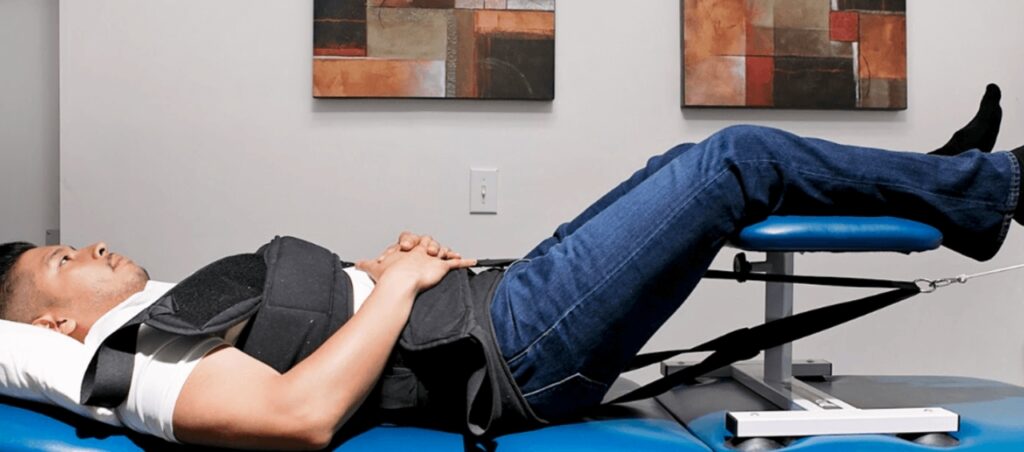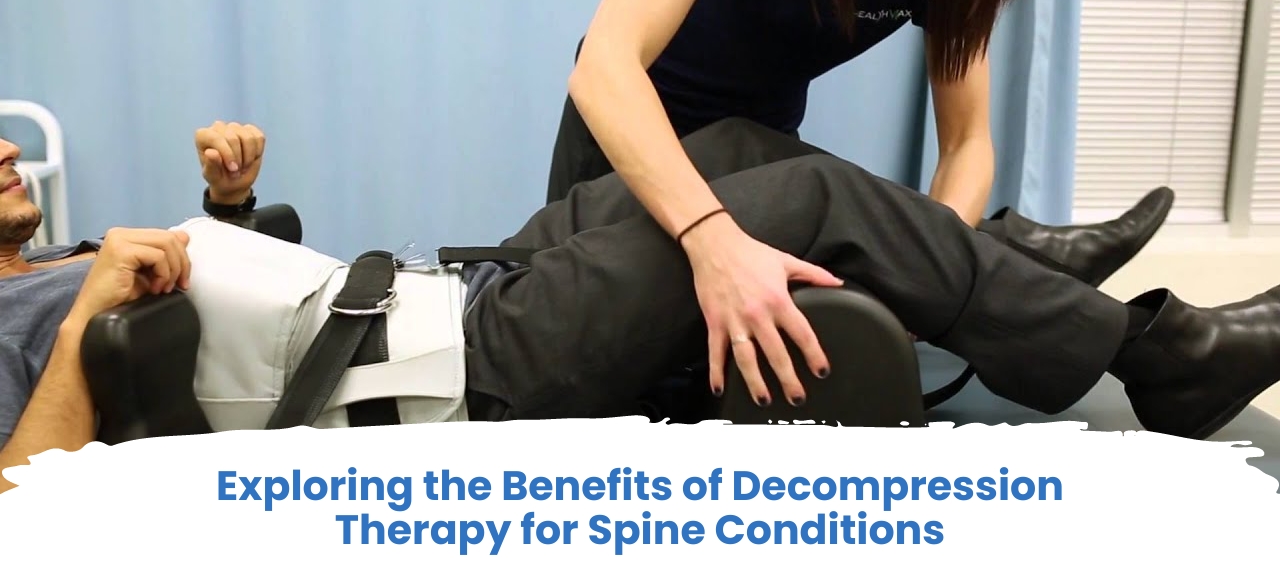Decompression therapy for spine is a non-invasive treatment method designed to alleviate the pain and discomfort associated with various spinal conditions. It involves the application of traction or other decompressive forces to the spine, aiming to relieve pressure on spinal discs and nerves. The importance of spine health cannot be overstated, as the spine serves as the central support structure for the body and is essential for mobility and function. However, factors such as aging, injury, or poor posture can lead to conditions like herniated discs, degenerative disc disease, and spinal stenosis, which can significantly impact quality of life. The purpose of Decompression therapy for spine is to address these issues by promoting spinal realignment, reducing pressure on affected nerves, and enhancing the body’s natural healing process. This treatment option offers hope for individuals suffering from chronic back pain, providing a conservative approach to managing their condition and improving overall well-being.

Understanding Spinal Decompression
Decompression therapy for spine refers to a therapeutic approach aimed at relieving pressure on the spine’s intervertebral discs and nerves, typically through the application of traction or other decompressive forces. Mechanical decompression involves the use of specialized equipment, such as traction devices or decompression tables, to gently stretch the spine and create space between vertebrae, thereby reducing compression on affected discs and nerves. Manual decompression, on the other hand, utilizes hands-on techniques performed by trained healthcare professionals, such as chiropractors or physical therapists, to manually manipulate the spine and alleviate pressure. Surgical decompression involves invasive procedures, such as discectomy or laminectomy, to remove tissue or bone that may be compressing spinal nerves. Spinal decompression therapy is commonly used to treat various conditions, including herniated discs, where the inner gel-like material of a disc protrudes outward and irritates nearby nerves, degenerative disc disease, which involves the gradual breakdown of spinal discs over time, sciatica, characterized by pain radiating from the lower back down the leg due to compression of the sciatic nerve, and spinal stenosis, a narrowing of the spinal canal that can compress nerves and cause pain or weakness in the legs. These techniques aim to alleviate symptoms, improve mobility, and enhance overall spinal health for individuals suffering from these debilitating conditions.
How Spinal Decompression Works
Decompression therapy for spine works through several mechanisms to alleviate pain and promote spinal health. Firstly, it affects intervertebral discs by creating space between vertebrae, which reduces pressure on the discs. This helps to alleviate compression on the discs, allowing them to rehydrate and regain their natural shape, which can reduce bulging or herniation. Secondly, decompression therapy reduces pressure on spinal nerves by alleviating compression caused by herniated discs, bone spurs, or other spinal abnormalities. This can help to alleviate symptoms such as pain, numbness, or tingling that may radiate down the arms or legs. Additionally, spinal decompression can improve spinal alignment by gently stretching the spine and promoting proper positioning of vertebrae. This can help to correct posture and reduce strain on surrounding muscles and ligaments. Lastly, Decompression therapy for spine can increase nutrient and oxygen delivery to the spine by promoting circulation within the spinal discs and surrounding tissues. This can support the healing process and improve overall spinal health. By addressing these factors, spinal decompression therapy offers a comprehensive approach to relieving pain and promoting spinal wellness.

Procedures And Techniques
Before undergoing decompression therapy for spine, patients typically undergo a thorough pre-treatment evaluation to assess their suitability for the procedure. This evaluation may include a comprehensive medical history review, a physical examination, and diagnostic imaging studies such as X-rays or MRI scans to identify the underlying cause of their spinal condition and determine if they are candidates for decompression therapy. Patient selection is crucial to ensure that individuals with conditions such as herniated discs, degenerative disc disease, or spinal stenosis are likely to benefit from the treatment.
During Decompression therapy for spine sessions, various equipment may be utilized to apply traction or decompressive forces to the spine. Common equipment includes specialized decompression tables or chairs equipped with harnesses or straps to secure the patient during treatment. Traction-based decompression involves the application of mechanical traction to the spine, which gently stretches and decompresses the affected discs and nerves. Alternatively, inversion therapy may be employed, where patients are positioned on an inversion table that allows them to hang upside down, facilitating spinal decompression through gravitational forces.
The duration and frequency of treatment sessions may vary depending on the individual’s condition and response to therapy. Typically, a series of sessions spaced out over several weeks are recommended to achieve optimal results. Each session may last between 20 and 30 minutes, during which the patient experiences controlled decompression of the spine. The frequency of sessions may start with several sessions per week and gradually decrease as symptoms improve. Regular re-evaluation by healthcare professionals ensures that treatment progress is monitored and adjustments are made as needed to optimize outcomes.

Benefits Of Decompression Therapy For Spine
Decompression therapy for spine offers a range of benefits for individuals suffering from spinal conditions. Firstly, it provides significant pain relief by alleviating pressure on the spinal discs and nerves, reducing symptoms such as back pain, sciatica, and radiating pain down the arms or legs. This can greatly enhance the quality of life for patients, allowing them to engage in daily activities without debilitating discomfort. Additionally, decompression therapy promotes improved mobility and flexibility by restoring proper spinal alignment and reducing stiffness in the muscles and joints surrounding the spine. Patients often experience an increased range of motion, making it easier to perform tasks and participate in physical activities. Another notable benefit is the reduction in medication reliance, as decompression therapy addresses the underlying cause of pain rather than simply masking symptoms with medications. This can lead to decreased reliance on painkillers and anti-inflammatory drugs, minimizing the risk of potential side effects associated with long-term medication use. Furthermore, in some cases, Decompression therapy for spine can help patients avoid the need for invasive surgery. By effectively treating conditions such as herniated discs, degenerative disc disease, and spinal stenosis, Decompression therapy for spine may provide a non-surgical alternative for individuals who wish to avoid the risks and recovery time associated with surgical interventions. Overall, the benefits of Decompression therapy for spine extend beyond pain relief, offering patients a holistic approach to improving spinal health and enhancing their overall well-being.
Post-Treatment Care And Rehabilitation
After undergoing decompression therapy for spine, it’s essential to follow recommendations for post-treatment activity to aid in recovery and prevent further issues. Patients are typically advised to avoid high-impact activities like heavy lifting or vigorous exercise for a period following treatment. Instead, they should focus on low-impact activities such as walking or swimming to promote gentle movement and improve circulation. Engaging in physical therapy and targeted exercises is also recommended to strengthen the muscles surrounding the spine, increase flexibility, and enhance overall spinal stability. These exercises may include core strengthening exercises, stretching routines, and range of motion exercises tailored to the individual’s specific needs and abilities. Consistent participation in physical therapy sessions can help optimize treatment outcomes and reduce the risk of recurrence of spinal issues. Additionally, making lifestyle modifications is crucial for long-term spine health. Patients should maintain a healthy weight to reduce excess strain on the spine, as obesity can exacerbate spinal conditions. Proper posture and body mechanics should be emphasized to prevent stress on the spine during daily activities. This includes maintaining a neutral spine position while sitting, standing, and lifting objects, as well as using ergonomic furniture and tools when possible. Furthermore, quitting smoking is encouraged, as smoking can impair blood flow and hinder the body’s ability to heal, potentially delaying recovery from spinal injuries or surgeries. By implementing these lifestyle modifications, patients can support the benefits of Decompression therapy for spine and promote lasting improvements in spinal health and function.

Conclusion
In conclusion, decompression therapy for spine offers a non-invasive and effective approach to alleviate pain and improve spinal health for individuals suffering from various spinal conditions. Through mechanisms such as reducing pressure on intervertebral discs and nerves, promoting spinal alignment, and increasing nutrient delivery to the spine decompression therapy provides significant benefits including pain relief, improved mobility, and reduced medication reliance. However, it’s important to consider potential risks, contraindications, and realistic outcomes when considering this treatment option. Therefore, individuals contemplating spine treatment are encouraged to consult with healthcare professionals to determine if decompression therapy is suitable for their specific needs and conditions. By seeking guidance from qualified providers, patients can make informed decisions and receive personalized care tailored to their unique circumstances. Ultimately, decompression therapy has the potential to greatly enhance the quality of life for patients with spinal conditions, offering hope for improved pain management, functional outcomes, and overall well-being.
Ready to experience relief? Contact South Texas Spine & Joint Institute today and discover the benefits of decompression treatment near me. Our expert team is here to help you reclaim your comfort and mobility. Schedule your appointment now and start your journey to a pain-free life.










